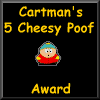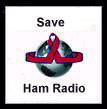| Repeater Glossary |
| Autopatch | A device that interfaces the repeater system with the telephone system to extend ham communication over the telephone communication network. |
| Breaker | A ham who interjects his call sign during a QSO in an attempt to get a chance to communicate over a repeater. |
| Channel | The pair of frequencies (input and output) a repeater operates on.
|
| Closed Repeater | A repeater whose use is limited to certain individuals. These are completely legal under FCC Rules. |
| Control Operator | An individual ham designated to "control" the repeater, as required by FCC regulations. |
| COR | Carrier-Operated-Relay, a device that, upon sensing a received signal, turns on the repeater's transmitter to repeat the received signal. |
| Courtesy Tone | A short tone sounded after each repeater transmission to permit other stations to gain access to the repeater before the tone sounds. |
| Coverage | The geographical area in which the repeater may be used for communication. |
| CTCSS | Continuous Tone Coded Squelch System, a subaudible tone system which operates the squelch (COR) of a repeater when the corresponding subaudible tone is present on a transmitted signal. The squelch on a repeater that uses CTCSS will not activate if the improper CTCSS tone, or if no tone, is transmitted. |
| Crossband | Communication to another frequency band by means of a link interfaced with the repeater. |
| Desense | Degradation of receiver sensitivity caused by strong unwanted signals reaching the receiver front end. |
| Duplexer | A device that permits the use of one antenna for both transmitting and receiving with minimal degradation to either the incoming or outgoing signals. |
| Frequency Synthesis | A scheme of frequency generation in modern transceivers using digital techniques. |
| Full Quieting | Signal strength in excess of the amount required to mask ambient noise. |
| Hand-Held | A portable FM transceiver that is small enough to use and carry in one hand. |
| Input | The frequency the repeater receiver is tuned to: The frequency that a repeater user transmits on. |
| Intermod | Interference caused by spurious signals generated by intermodulation distortion in a receiver front end or transmitter power amplifier stage. |
| Key-Up | Turning on a repeater by transmitting on its input frequency. |
| LiTZ | Long Tone Zero (LiTZ) Alerting system. Send DTMF zero (0) for at least three seconds to request emergency/urgent assistance. |
| Machine | The complete repeater system. |
| Mag-Mount | A mobile antenna with a magnetic base that permits quick installation and removal from the motor vehicle. |
| Offset | The spacing between a repeater's input and output frequency. |
| Omnidirectional | An antenna system that radiates equally in all directions. |
| Output | The frequency the repeater transmits on; the frequency that a repeater user receives on. |
| Picket-Fencing | Rapid flutter on a mobile signal as it travels past an obstruction. |
| Polarization | The plane an antenna system operates in; most repeaters are vertically polarized. |
| Reverse Autopatch | A device that interfaces the repeater with the telephone system and permits users of the phone system to call the repeater and converse with on-the-air repeater users. |
| RPT/R | Abbreviation used after repeater call signs to indicate that the callsign is being used for repeater operation. |
| Simplex | Communication on one frequency, not via a repeater. |
| Split Sites | The use of two locations for repeater operation (the receiver is at one site and the transmitter at another), and the two are linked by telephone or radio. |
| Squelch Tail | The short noise burst of unmodulated carrier following each repeater transmission. |
| Time-Out-Timer | A device that limits the length of a single repeater transmission (usally 3 minutes). |
| Tone Pad | A device that generates the standard telephone system tones (DTMF) used for controlling various repeater functions. |





